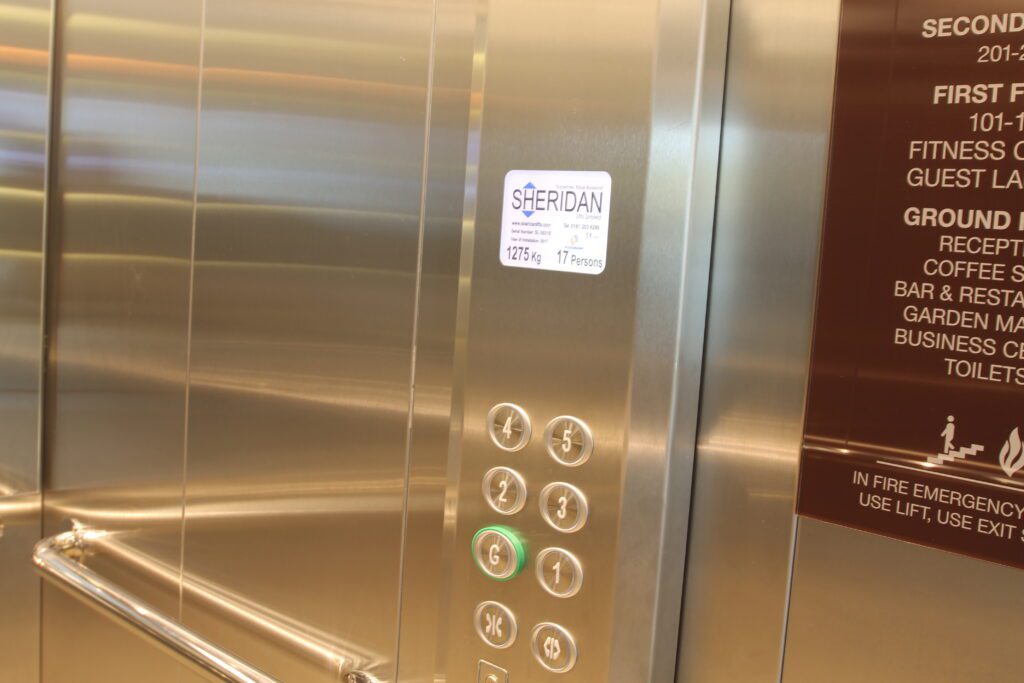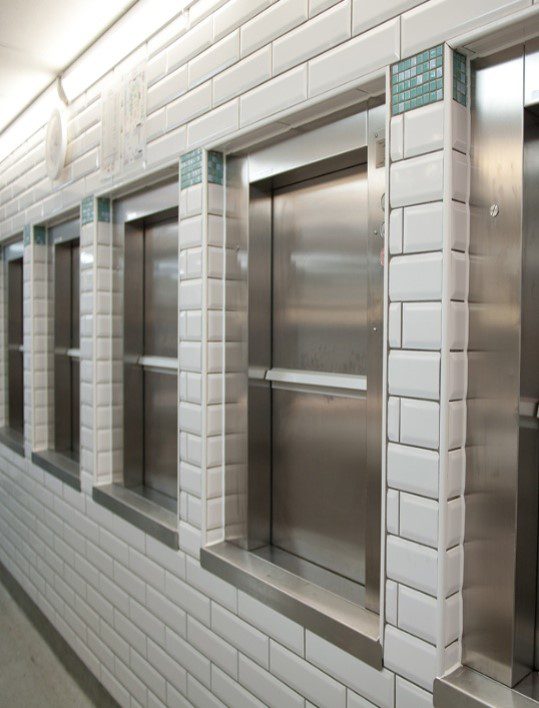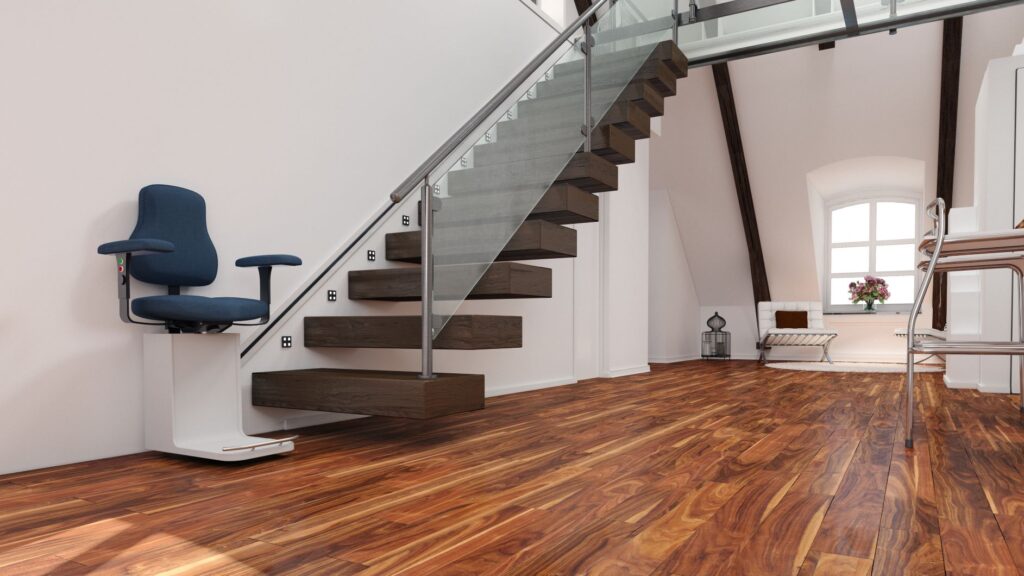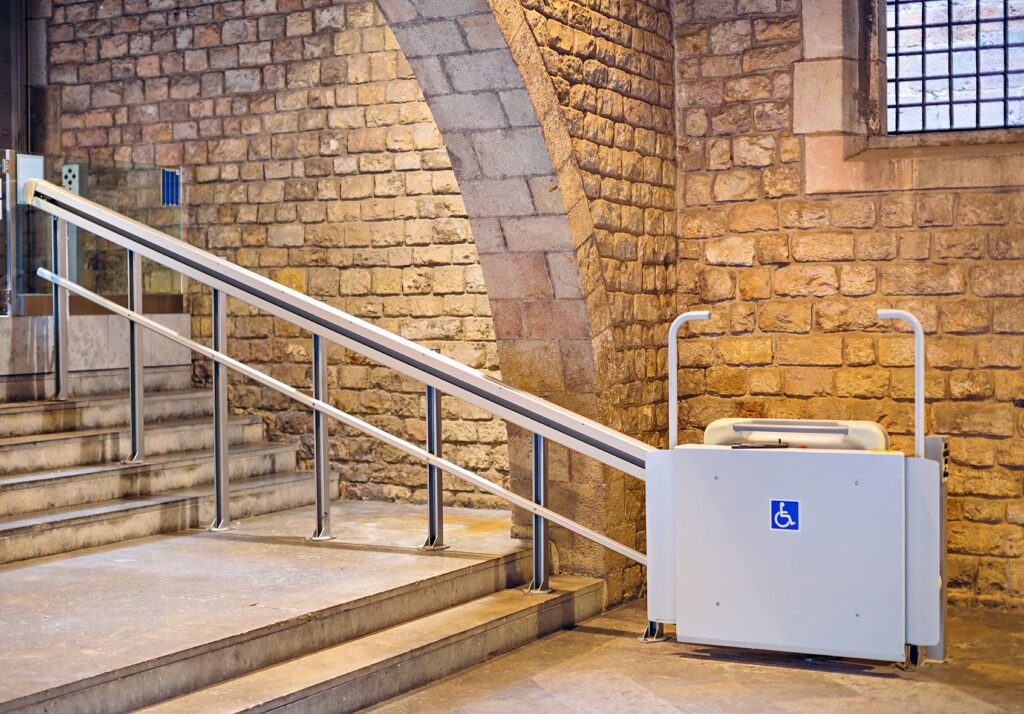The Importance of Elevators and Lifts
Lifts and elevators have been around in some form or another for hundreds of years, and for good reason! Both traditional and modern lifts provide users and building owners with a convenient way to travel, transport goods, or improve accessibility.
In the modern world, lifts are an absolute necessity for many different types of building, and understanding the importance of vertical transport is exceptionally important.
In our ultimate guide to lifts, we’ll take a look at different types of lifts, the importance of lift safety, the basic principles of lift accessibility and answer some of the most common questions we get about lifts and elevators here at Sheridan Lifts. Keep reading to learn more, or get in touch with our team! With decades of expert experience behind us, we’re best placed to help you whether you need a new lift installation, lift repair services or lift maintenance!
Your Guide to Passenger Lifts
Passenger lifts are some of the most popular kinds of lift, and are found in millions of buildings all over the world. The term “passenger lift” simply refers to the fact that the primary user of this kind of lift is people!
Passenger lifts aren’t designed to carry goods or machinery, and they have a range of features that help users have a pleasant journey and experience when they travel using these lifts. A standard passenger lift travels between floors at around 0.6m per second, allowing for economical and intelligent distribution of passengers throughout the building, even at peak times and during periods with high footfall.
Passenger lifts are available in a range of different formats, including glass lifts, panoramic lifts, and energy-saving lifts. They are incredibly versatile, and can be designed to fit almost any size of lift shaft and capacity requirements. Passenger lifts are also an incredibly important consideration when it comes to accessibility policies in new and existing buildings.

How to Install a Passenger Lift
While we’ve all used passenger lifts before, you might not realise the number of considerations that go into the installation of a passenger lift. When choosing a passenger lift, building managers and architects will carry out extensive surveying and modelling to determine the best location, the right number of lifts and the type of lifts required for each building. Some of the considerations that need to be taken into account when choosing and installing a passenger lift include:
- The number of passengers the lift needs to hold
- How often the lift will be used
- The shape and size of the lift
- The depth and location of the lift shaft and lift pit
- The lifting mechanism
- The appearance of the lift, including lighting, mirrors, floor and wall panelling materials, the appearance of the controls and any CCTV installed.
- The safety features of the lift, including levellers, fail safes, and communication units to be used in case of a lift breakdown.
A passenger lift requires a relatively deep lift pit (of at least 1m), which also needs to be taken into account when installing a passenger lift. In new buildings, this can be planned in advance by architects and lift specialists like the team at Sheridan Lifts. However in pre-existing buildings, this can require extensive construction work, and another lift type might be a better option.
Goods Lifts and Service Elevators
Goods lifts, service lifts, dumbwaiter lifts and platform lifts are among some of the most important pieces of equipment for thousands of businesses and organisations in the UK. They allow for quick, safe and seamless movement of goods in all kinds of buildings and environments, to keep operations running smoothly no matter what industry you’re in.
The term “goods lift” can refer to a whole host of different types of lifts, so it’s important that you work with a lift supplier who understands your needs perfectly.
Goods lifts and service elevators can be used in a massive range of different sectors and applications, including:
- Restaurants, hotels, pubs and hospitality settings
- Schools, hospitals and other public sector buildings
- Commercial settings such as stores, banks and shopping centres
- Distribution centres
- Manufacturing plants and centres
- Industrial applications.

Different Types of Goods and Service Lifts
While the terms “goods lifts” or “service lifts” can be pretty broad, there are a few important subcategories of lifts in this sector that are very popular and have a wide range of applications.
Platform lifts are some of the most popular lifts in industrial contexts because they don’t require a built-in lift pit, and therefore can be placed almost anywhere. They are self-contained structures that can hold exceptionally heavy weights, making them ideal for moving equipment and personnel alike. Platform lifts are generally not as well suited for multiple floors, but over shorter distances, they can be incredibly effective. The installation costs of platform lifts are generally lower and the installation process is quicker, as no additional building or construction work is required.
Dumbwaiter lifts are also exceptionally common in the hospitality and commercial sectors. Dumbwaiters are much smaller than a traditional passenger lift or service lift, as they are designed to carry goods only. Dumbwaiters are one of the oldest kinds of lifts, and are based on incredibly simple design principles which have improved over time, but have not actually changed that significantly! They are pulled up on rails by a pulley system and can transport small goods like plates, glasses and cutlery, or larger goods, for example, medical equipment. Dumbwaiter lifts can carry anywhere from 20kg to 300kg loads between floors without any human passengers, making them versatile and easy to use.
Goods passenger lifts are designed for use in contexts where goods being transported need to be accompanied by a passenger. Valuable goods, consumer goods and medical equipment can all be transported safely and securely with a human passenger alongside them.
Private Residential Lifts & Home Lifts
As well as being a key feature in many public and commercial buildings, lifts can also be installed in residential homes – both for improved accessibility and as a showstopper feature in luxury homes.
Platform lifts and stairlifts are some of the most common lift types when used for accessibility. When installing a home lift like these, not only is minimal construction work required (as a lift pit/shaft is not needed), the value that this feature adds to the home for the future is incredibly significant. Additionally, access lifts in private homes allow people with disabilities and different accessibility needs to remain much more independent and stay in their own homes.
In the luxury property market, on the other hand, competition can be fierce. Custom lifts that show off the design of the property while also providing accessibility and ease of use can be a massive USP when it comes to selling the property, and can add significant value to the home.

Legal Requirements: When is a Lift Needed, and What Accessibility Requirements are there?
One of the biggest draws of having a lift in your building is that it makes your spaces more accessible to people with disabilities and mobility issues. There are a few pieces of legislation that tell building owners, building managers, and architects when a lift is needed, and the features it needs to have in order to improve accessibility.
The Equality Act 2010 states that if your building places someone with mobility issues at a substantial disadvantage when using the building, making “reasonable adjustments” is the legal duty of the building owner or manager. In some cases, this isn’t always possible, but in many instances, lifts can be installed in existing buildings to improve accessibility and ensure the safety and comfort of all building users.
Lifts are commonly used in most buildings where there are two or more floors that need to be accessed by users. In buildings with just one floor, a ramp can be used in place of lifts or stairs to meet the requirements of the Equality Act.
Not only does installing lifts or ramps in line with the Equality Act improve the commercial value of your building, it also means that any members of the public can use your facilities, and no one is excluded from your premises. The Building Regulations, Approved Document M (Part M) gives guidance on how to implement accessibility features, including lifts, in your buildings.
In new buildings, British Standard BS 8300-2:2018 sets out the requirements for lifts and accessibility features, and how new buildings can create an inclusive environment for all users. As well as containing requirements for passenger lifts, BS 8300-2:2018 also offers recommendations on other accessibility features such as handrails, building layouts, lighting, building facilities and much more.
In line with BS 8300-2:2018, new passenger lifts should:
- Be easily found in a building’s layout
- Be large enough to accommodate at least one wheelchair user and one attendant.
- Have a door width that is large enough to accommodate a wide range of people, including wheelchair and power chair users.
- Have space outside the lift for wheelchair users to manoeuvre (on all floors).
- Have an accurate stopping distance which means users with additional needs can easily enter and exit the lift (on all floors).
- Have clear, easily found, easily understood lift controls.
- Be fitted with both audible and visual signals that tell users where the lift is and where it is going.
These regulations allow for the safe and comfortable movement of all people, including those with additional mobility requirements, creating an inclusive and accessible environment.

Lift Safety Regulations: How we Keep our Customers Safe
LOLER is the abbreviation for ‘Lifting Operations and Lifting Equipment Regulations.’ LOLER Regulations tell owners of lifts and lifting equipment the legal requirements needed to keep buildings and passengers safe. Companies can also be LOLER Certified, and any reputable lift installation or maintenance company will have a LOLER certification.
LOLER regulations apply to companies and individuals in the UK (including offshore) who own or use lifting equipment, lifting accessories and loose gear on lifting applications. This applies to anyone using lifts and lifting equipment on their premises, even if they don’t own the equipment themselves. This means that LOLER regulations are important not just for Sheridan Lifts, but for our customers as well, and we’ll help guide you to ensure your new installations or existing lifts are LOLER compliant as standard.
Lifts and all of their components are covered by LOLER, as are all of the processes surrounding lift installation and maintenance. LOLER sets out:
- Which lift safety mechanisms must be followed
- How often lift inspections must be carried out
- What these lift inspections entail
- Who can carry out lift inspections and lift maintenance
- How often maintenance must be carried out
- The processes to ensure the results of inspections are put into place
- How lifts and lifting equipment can be used
FAQs
When were lifts invented?
The earliest lifts have been documented as far back as 1000AD, but the modern lift as we know it first began to be developed during the 1800s and the industrial revolution.
How do elevator brakes work?
Elevator brakes can work in a few different ways, depending on the type, model, and operating mechanisms of the lift. The most common method of braking for modern lifts is using electromagnets.
Lifts with electromagnetic brakes work by holding the brakes in an open position when the car is moving, and then letting them naturally close when the car is stopped. This has the additional benefit of acting as a failsafe if the lift loses power – the natural position of the brakes is closed, which means the brakes automatically clamp shut if the building or lift loses power, holding the lift car safely in place.
Modern lifts also feature automatic braking systems towards the top and the bottom of the lift shaft, so if the elevator car moves too far in either direction, the brake brings it to a stop.
Can a lift free fall?
Free falling lifts are incredibly rare in today’s world. In fact, you’re more likely to have an accident on stairs than in a lift! For almost a century, lifts have had a backup brake that automatically engages if the lift carriage were to fall. Even if all the cables holding a lift snapped (which is incredibly unlikely), the elevator would only fall a few feet before the safety brakes would activate.
Can you get a lift without a shaft?
Yes, platform lifts don’t have a lift shaft. Instead, they are self-contained and can be placed almost anywhere in a building. This makes them really popular for use in pre-existing or listed buildings where major construction work can’t be carried out. They’re also ideal for use in industrial applications and make great home lifts.
How big is a home lift?
In order to get the right size for your home, you’ve got to pay attention to the dimensions of the room where the lift will be installed. There are several different dimensions depending on the area available. Your most common sizes are 40″ x 54″ and 36″ x 60″. However, most local building regulations require home lift doorways to be at least 32 inches wide.
To learn more about how lifts work, or to get help from the experts on your lift project, please don’t hesitate to get in touch with the team at Sheridan Lifts. With decades of experience under our belt, we can help you with lift installation, maintenance and repairs of the highest standard.